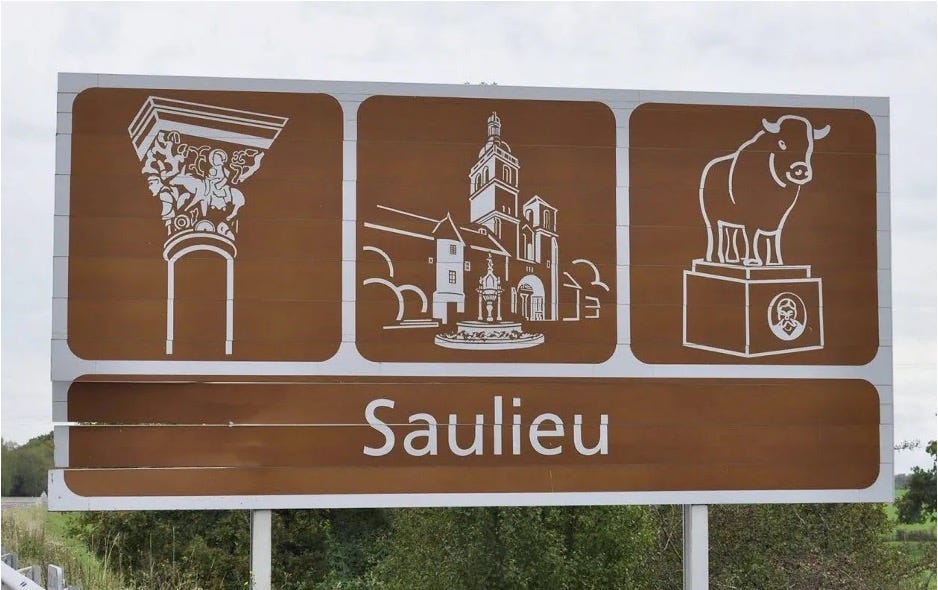Driving along the autoroutes in France is a treat for one thousand reasons—one of my favorites being the large, brown tourism signage. It seems that every few minutes, you’re meeting a new one on the roadways. They’re always quite simplistic: a town’s name in sans serif type, a varying hue of marron (brown), and a stylized drawing depicting the notable monuments or productions of the spot.
Whether you’re near Paris in the North, entering the Basque Country bordering Spain, driving along the Mediterranean coast, or deep in the countryside, the signs will always greet you in the same way. Being someone who loves visuals, information, and patterns, I’m infinitely eager to catch a quick glimpse of any and all of them.
A few weeks ago, while in the passenger seat heading home from a friend’s farm in what felt like the middle of nowhere, my eyes locked on one particular sign: Tulle. I gasped, “TULLE! Like the fabric?!” I immediately reached for my phone to search for confirmation. Oui, like the fabric! Its name is tulle because it’s from the French town of Tulle. Of course! I found myself joking: “It’s not really champagne unless it’s from the French region of Champagne. Is it the same rule with tulle?”
Tulle’s history: the town and the textile
Geographically, Tulle lies four hours and thirty-six minutes from my home (in the southwest of France) and in the deep rivered valley of Corrèze. It’s a small commune whose history is quite brutal despite its historic connection to the delicate dressings of ballerinas and brides. In the 800s, it was plundered repeatedly by Vikings. This seems surprising, because it’s nowhere near the sea. The Black Death, the bubonic plague hit in the 14th century, and aggressive brigades set the town on fire not too long after. Tulle began gaining a notable upper-class population as it rebuilt, but then the Wars of Religion caused the city to become bloody again from 1577-1585. This really is a story of rising and falling!
Rest assured, the wealthy rebuilt. The town’s infrastructure benefited greatly from an architectural competition, bringing in Renaissance-style facades. Beginning in the 17th century, Tulle economically prospered as mills along the river began production of new industries. Paper was one of them, silk another, but the most crucial one to this story was the craft of its namesake textile. The earliest version of tulle was more akin to lace—semi-transparent and manually, complexly woven via a method called point de Tulle using fine cottons, linens, and/or silks.
Then, as the bad-to-good-to-bad pattern of history repeated, Tulle began producing firearms. Despite this, there weren’t noticeable signs of violence and destruction in the city’s history until a terrible massacre of Tulle citizens during WWII.
The town’s path to fame is more light-hearted once again: it’s now considered the accordion capital of the world. Still, every August, Tulle hosts a festival dedicated to lacemaking. My conclusion is this: Tulle’s story depicts humans as being far more complicated than the intricate lacing itself.
Have you ever visited Tulle? Please share in the comments below.
Introducing Contributor, Kelsey Rose
Immerse yourself in all of Kelsey Rose’s articles on her Contributor page.


